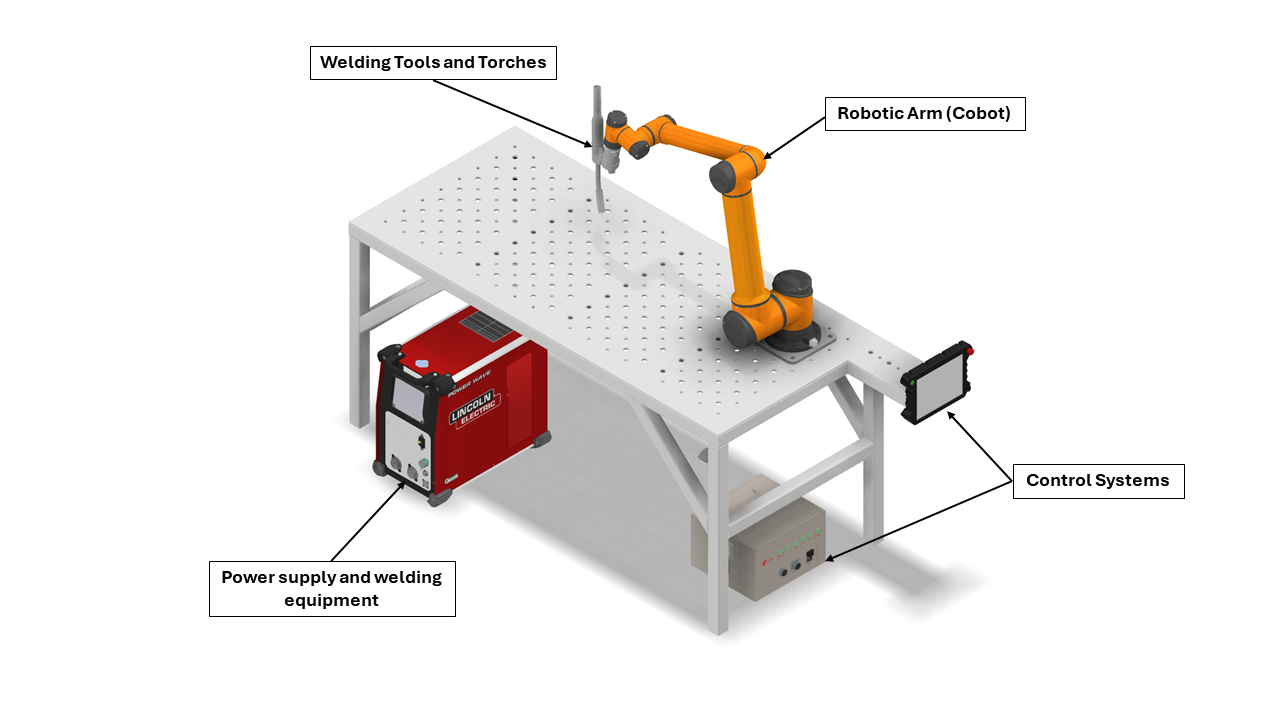
Robotic Welding Systems
Automated Welding
Automated welding applications refer to the use of automated systems, such as robots and computer-controlled machines, to perform welding processes. This automation aims to enhance precision, efficiency, and consistency while reducing the need for manual labor in welding operations.

Key Components of Automated Welding Systems
Robotic Arms: Industrial robots equipped with welding tools that can move along multiple axes to perform complex welding tasks.
Welding Tools and Torches: Specialized tools attached to robotic arms, including MIG (Metal Inert Gas), TIG (Tungsten Inert Gas), and laser welding torches.
Control Systems: Software and hardware systems that control the movement, speed, and welding parameters of the robotic arms.
Sensors and Vision Systems (optional): Devices that detect and monitor welding conditions, joint positions, and quality, often using cameras and laser sensors (optional).
Power Supplies and Welding Equipment: Sources of electrical power and welding machines that provide the necessary energy for the welding process.

Some samples of Automated Welding Solutions
Benefits of Automated Welding Systems
Automated welding systems offer numerous benefits:
Increased Efficiency: These systems can work continuously without breaks, leading to higher productivity compared to manual welding.
Consistent Quality: Robots can maintain precise weld consistency, reducing errors and ensuring uniform quality across products.
Improved Safety: By handling dangerous tasks, robots minimize the risk of accidents and protect workers from exposure to hazardous materials.
Cost Savings: While initial investment can be significant, automation reduces labor costs in the long run, with potential savings in materials and rework.
Enhanced Flexibility: Modern robotic systems can adapt to various welding tasks and workpieces, offering versatility in production.
Data-driven Optimization: Integrated sensors and software enable real-time monitoring and adjustment, optimizing parameters for efficiency and quality.
Shortened Lead Times: Faster welding processes and reduced setup times translate into quicker turnaround for orders.
Traceability and Documentation: Automated systems can track welding parameters, providing comprehensive documentation for quality control and regulatory compliance.

